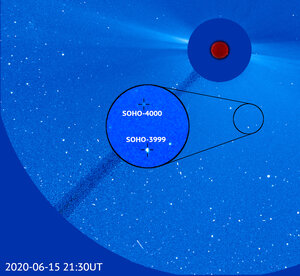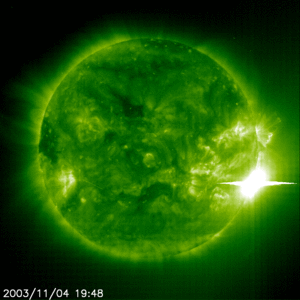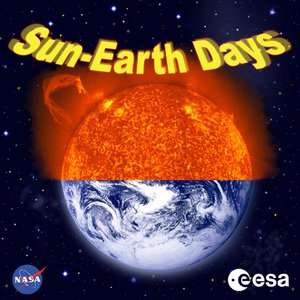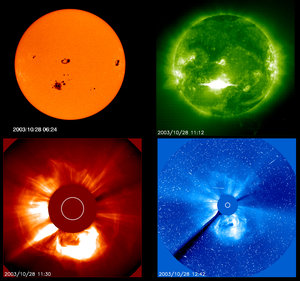History’s greatest comet hunter approaches major milestone
As of 6 July 2005, 990 comets have been discovered using the ESA/NASA Solar and Heliospheric Observatory (SOHO) spacecraft, which is expected to discover its 1000th comet this summer.
The SOHO spacecraft, a joint effort between NASA and the European Space Agency, has been so prolific that it has accounted for almost half of all comet discoveries for which orbits have been computed in the history of astronomy.
Before SOHO was launched, only 16 ‘sungrazing’ comets had been discovered by space observatories. Based on that experience, who could have predicted that SOHO would discover more than sixty times that number, and in only nine years?
Comets are chunks of ice and dust that zoom around the Solar System in elongated orbits. These ‘dirty snowballs’ are the nucleii of the comets. Comet nuclei are thought to be cosmic ‘leftovers’, the condensed remains of the gas and dust cloud that formed the Solar System.
About 85 percent of the comets discovered so far by SOHO belong to the Kreutz group of ‘sungrazing’ comets, so named because their orbits take them very close to the Sun.
The Kreutz sungrazers come within 800 000 km of the Sun’s visible surface. In comparison, Mercury, the planet closest to the Sun, is about 57.6 million km from the solar surface.
SOHO has also been used to discover three other well-populated comet groups: the Meyer (at least 55 members), Marsden (at least 21 members), and Kracht (24 members) groups. Comet groups are named after the astronomer who determined that they are related because they have similar orbits.

Many SOHO comet discoveries have been by amateurs using SOHO images on the internet. SOHO comet hunters come from all over the world; the United States, United Kingdom, China, Japan, Taiwan, Russia, Ukraine, France, Germany and Lithuania are among the many countries whose citizens have used SOHO to chase comets.
Almost all SOHO's comets are discovered using images from its Large Angle and Spectrometric Coronagraph (LASCO) instrument. LASCO is used to observe the faint, multimillion-degree outer atmosphere of the Sun, called the corona.
A disk in the instrument is used to make an artificial eclipse, blocking direct light from the Sun so the much fainter corona can be seen. Sungrazing comets are discovered when they enter LASCO's field of view as they pass close by the Sun.
SOHO successfully completed its primary mission in April 1998, and it has enough fuel to remain on station and keep hunting comets for decades, assuming the LASCO instrument continues to function.
For more information:
Bernhard Fleck, ESA SOHO Project Scientist
E-mail: bfleck @ esa.nascom.nasa.gov















 Germany
Germany
 Austria
Austria
 Belgium
Belgium
 Denmark
Denmark
 Spain
Spain
 Estonia
Estonia
 Finland
Finland
 France
France
 Greece
Greece
 Hungary
Hungary
 Ireland
Ireland
 Italy
Italy
 Luxembourg
Luxembourg
 Norway
Norway
 The Netherlands
The Netherlands
 Poland
Poland
 Portugal
Portugal
 Czechia
Czechia
 Romania
Romania
 United Kingdom
United Kingdom
 Slovenia
Slovenia
 Sweden
Sweden
 Switzerland
Switzerland


































